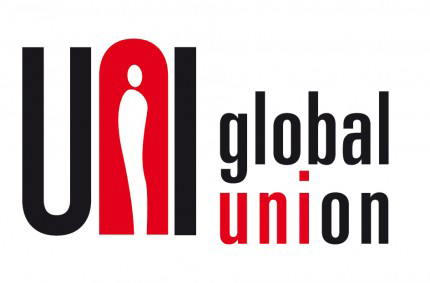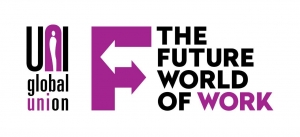More Women and Youth in Unions: what can we do?

This paper was presented by Christine at the Workshp to coordinate CBA in the East and the South of Africa. Christina Kavata
Christina Kavata
Introduction
Increased membership and retention of members is the expected key out put of genuine and viable trade Unions. Membership of many African trade Unions have in the past undergone periods of stagnation. With the current social, economic and technological changes experienced locally and internationally, it is feared that the number of new entrants mostly youth and women into the trade union may not be sufficient to ensure their future sustainability. There is therefore urgent need to engage in a well-planned recruitment drive and to mount vigorous campaigns to attract both youth and women into the Labour movement. For the trade unions to be able, to do this they need to do the following:
Develop a change of attitude towards their work
Conduct a trade Union audit(i.e. service to members ,benefits achievements etc)
Examine the Labour market
Develop innovative and proactive membership recruitment strategies
Make a study of both youth and women problems
Establish a data base of women and youth in employment in their respective countries
Establish women and youth structures in their respective unions (Women/ Youth committees)
William James, one of the wisest men America has ever produced once said,” The greatest discovery of my generation is that human beings can alter their lives by altering their attitudes of mind.” There is urgent need therefore, for the union Leaders in A Africa to flush out all old, tired and worn-out thoughts and fill their minds with those that are fresh, creative and proactive. It is only by this attitudinal change that union Leaders can confront the many challenges facing them in regard to women and youth issues.
Women in Employment
For the last 30 years, the number of women entering Labour market is increasing. The structure of the working class is therefore changing, as is the range of issues to be tackled by both employers and the trade unions. The struggle by women within both society and trade unions can now be seen in the rise by women in civil leadership and politics .The international community recognition of women’s, struggle resulted into the 1980 UN declaration of the women’s decade and the international women’s day (8th March).The role of women in employment and their trade unions must therefore not be ignored.
Formerly a woman was confined in the home, but with new developments, some women have been able to obtain formal education and hence employment .Women issues such as maternity protection, child care facilities and legal rights were not given priorties.The major problem is how management largely made up of men and led by men react to these new women workers who have different interest and needs. This poses challenges to the principals of unity, solidarity and equality, which all women workers crave for. If women concerns are not taken care of by their employers, then there will always be discontent among the female workers. Union leaders stand warned!
The following are some of the things women should be allowed to do by their respective Managements and the Unions jointly.
Bargain for provision of supportive services for women at work places in addition to the usual rights on maternity. e.g. Establishment of day care centers at work places, light work for expectant women, exemption of night duty work etc.
Defend themselves through their unions incase of sexual harassment, discrimination, un necessary disciplinary actions, victimization and enforcing workers equal rights at work.
Get access to special education as women workers on various subjects e.g. the laws that affect women, what trade unions can do, how grievances are handled, Gender issues, and other women rights, to better their understanding.
Youth in Employment
There is a big rise in the number of youth in employment being male.
Surprisingly even those in management positions are predominantly men but this has not saved male youth workers from suffering. Through workers organizations (trade Unions) however, workers have been able to confront some of the issues that affect them.
These include-
Low pay /poor remuneration
Unfair treatment
Unfair promotions
Inadequate allowances e.g. house allowance, medical allowance, transport etc
Inadequate leave transport
Unfair transfers
Bad or no appropriate provision of protective wear/gadgets
Exposure of dangerous chemicals without being educated on the long term hazards (issues of OHS)
HIV/AIDS and other workplace related hazards.
Lack of provision for recreation facilities to the youth.
What should be done
Trade Union leaders in Africa should double their efforts in providing services to their members by fulfilling the following obligations.
Revised union constitutions to include an affirmative clause e.g. In the case of Uganda, most unions have clauses that allow 30% of their executives to be women. Such clauses safeguard women and youth from domination by men and old workers.
Making comprehensive agreements to be entered into between workers and employers and remain in effect for at least one year so that workers and employers will know what to expect and how to act in accordance with National Plan.
Making strong advocacy and lobbing for their members’ welfare and other problems in society.
Ensuring each Industry is represented by one union.
Put up strong union structures e.g. women and youth committees.
Intensifying on enlightening workers on their rights and publicize union activities.
Ensuring compulsory recognition of unions by Employers.
Amending the existing grievance and disputes handling machinery to ensure clear short and speedy settlement of disputes
Put pressure on Governments to come up with clear employment policies e.g. inspecting industries and enforcing other Labour legislations, giving work permits to foreigners, fixing minimum wages, ratification of ILO conventions especially and No. 111 of 1958 (discrimination) No. 100 of 1951 (equal remuneration) etc.
Conclusion
Rights for women workers are part of the general rights for all workers and a component of the universal human rights. However, women in society are marginalized, vulnerable and oppressed. They also have unique biological and gender issues, which need to be addressed separately. Similarly, issues which affect youth in employment are their human rights that need not to tamper with. Unfortunately unless the people who are affected by these issues stand up and struggle to liberate themselves from being oppressed the situation cannot change hence the saying “if there was a sharp object under one’s sole it is that one wearing that shoe who will fill the pinch” I want to wind up by displaying the 5 common attitudes of human beings which are:
Those who make things happen
Those who think they make things happen
Those who watch things happen
Those who wonder what happened
Those who did not know that anything had happened
In which category should both working women and youth fall?
Thank you,

